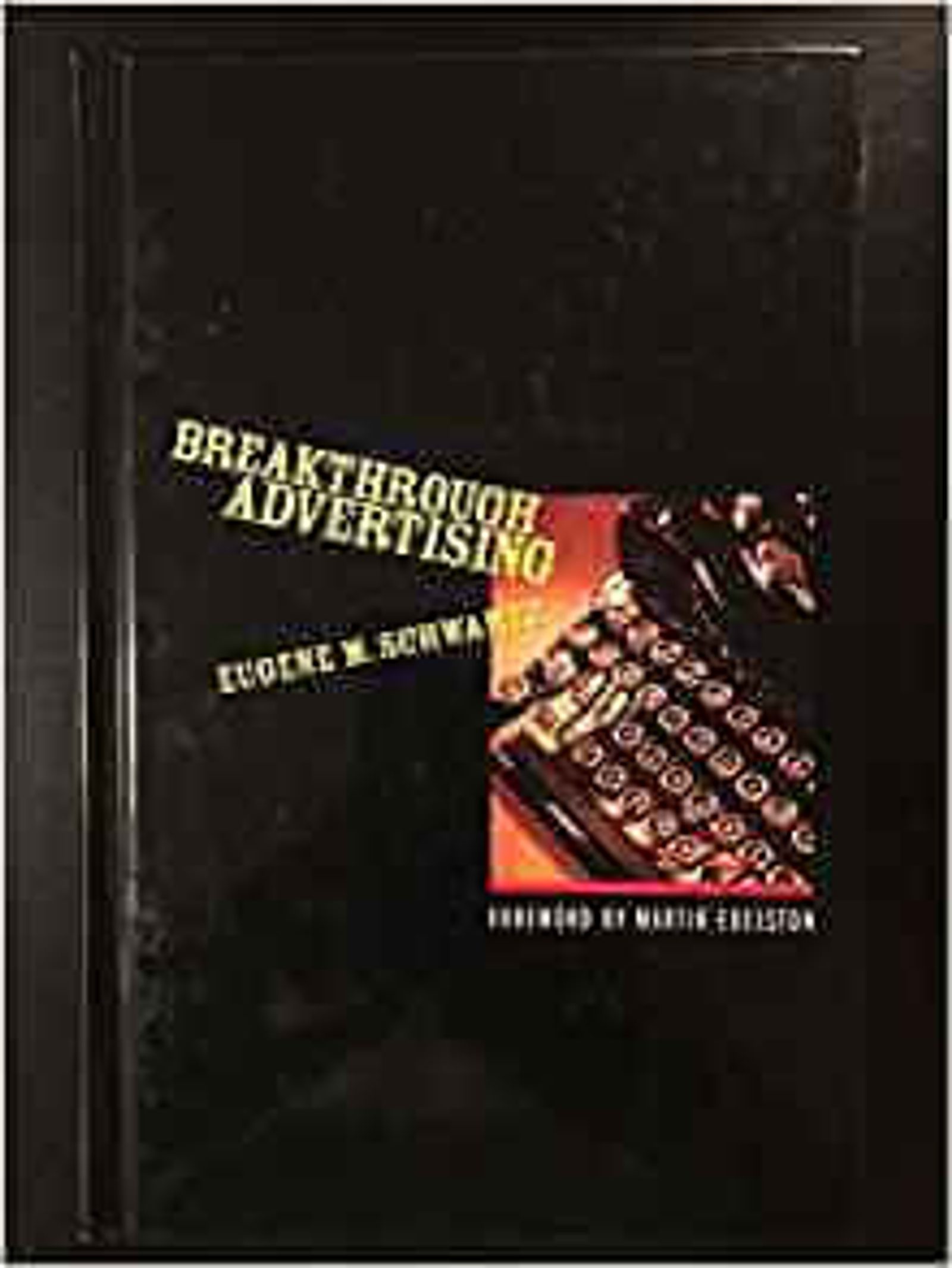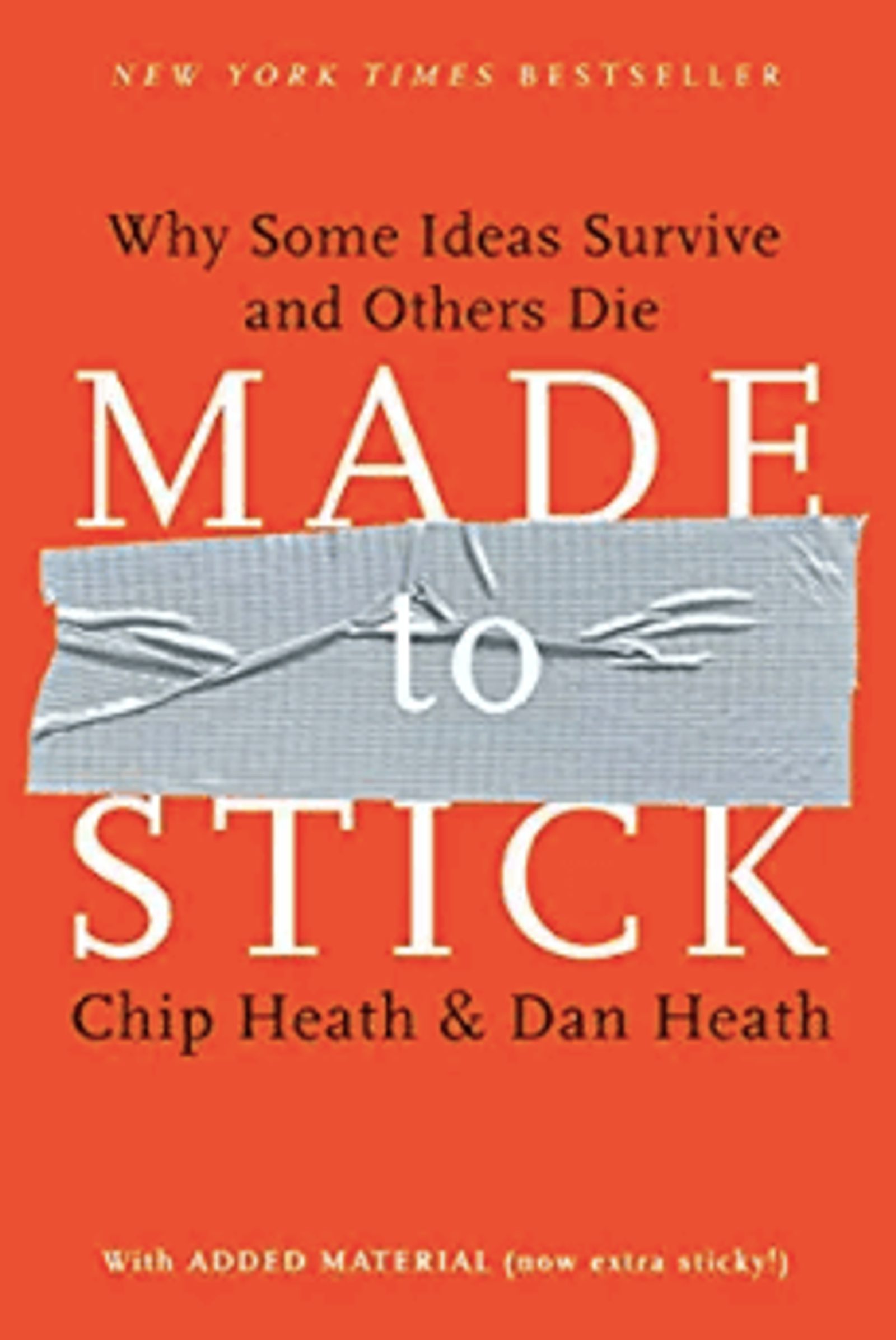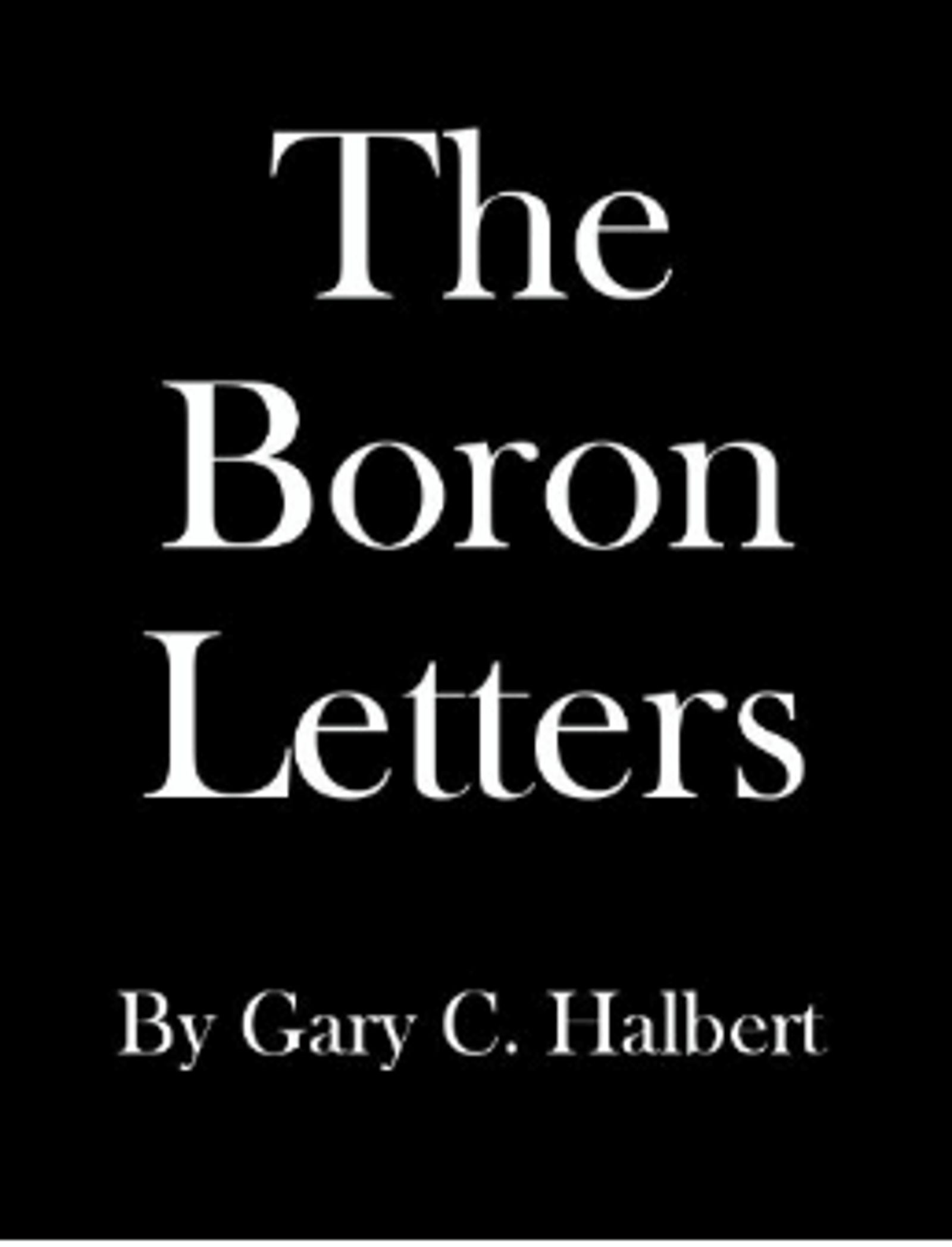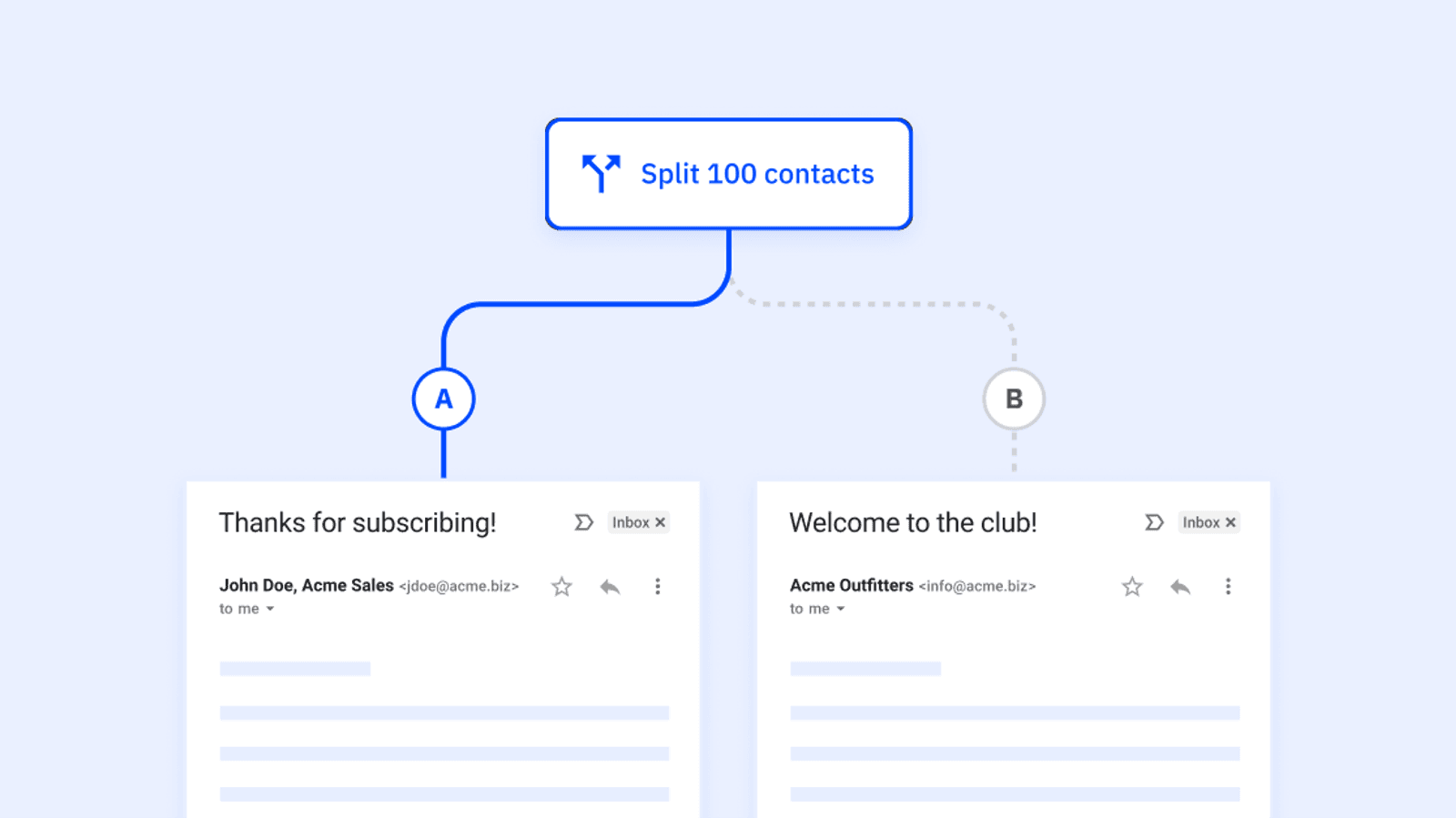“At 60 miles an hour, the loudest noise in this new Rolls-Royce comes from the electric clock.”
This headline written by David Ogilvy in 1958 is considered one of the best copywriting examples of all time.
Why?

He could have just said something like “the latest Rolls-Royce model is a really quiet car.”
Except he didn’t.
Instead, he wrote copy that paints a picture and strikes a chord of sensory detail with the reader.
- “60 miles an hour” – you can imagine the feeling of that speed while sitting in a car, maybe feel the quiet hum of the engine beneath you or the woosh of air through an open window
- “Electric clock” – you can hear the sound of the occasional stark tick from a clock in the back of your mind.
This copy is memorable and effective because it digs into the mind and experience of the reader. This is what good copy does – and it’s what yours can do too.
Good copy can supercharge your sales and marketing to drive revenue and create lasting, personal customer relationships. But ...how do you write good copy? How do you become a good copywriter?
Learn from the best! Specifically, the best copywriting books. We’ve compiled a list of the top 10 best copywriting books ever.
These 10 books about copywriting go beyond just learning how to write coherent sentences. They dig deep into how to figure out how your readers think — and what makes an idea really stick.
You’re going to need a bigger bookshelf.
The top 10 best copywriting books
Here are the top 10 best copywriting books that will change the way you think about writing:
- Breakthrough Advertising by Eugene Schwartz
- Made to Stick by Dan and Chip Heath
- The Boron Letters by Gary Halbert
- Influence by Robert Cialdini
- Ogilvy on Advertising by David Ogilvy
- Finding the Right Message by Jennifer Havice
- Never Split the Difference by Tal Rahz and Chris Voss
- Thinking, Fast and Slow by Daniel Kahneman
- Building Distinctive Brand Assets by Jen Romaniuk
- How to Write a Good Advertisement by Vic Schwab
1. Breakthrough Advertising by Eugene Schwartz

(Image source: Amazon)
“Copy is never written, but assembled.” – Eugene Schwartz.
Breakthrough Advertising is considered by many copywriters to be the Bible of copywriting. It’s so revered that the cheapest you’ll find it anywhere is about $125. (But if you can swing it, it’s definitely worth it).
This book can be summed up by that first Eugene Schwartz quote, but explained with this second one:
“Copy cannot create desire for a product. It can only take the hopes, dreams, fears and desires that already exist in the hearts of millions of people, and focus those already existing desires onto a particular product. This is the copywriter’s task: not to create this mass desire – but to channel and direct it.”
In other words, the concepts behind your copy already exist because the desires, problems, hopes, and dreams of your audience already exist. All copywriters do is assemble it.
Breakthrough Advertising is probably best known for the idea of 5 stages of awareness, which a lot of modern copywriters use to organize landing pages and other conversion copy. These 5 stages state how a copywriter approaches persuasion. The 5 stages of awareness are:
- Unaware: This person doesn’t know they have a problem, and it’s usually not worth marketing to them.
- Problem aware: This person knows they have a problem, but doesn’t know there are solutions to that problem.
- Solution aware: This person knows there are solutions, but hasn’t chosen one and doesn’t know about your product.
- Product aware: This person knows about your product, but isn’t totally sure that it solves their problem.
- Most aware: This person knows a lot about your product. They are on the cusp of buying but need to know the specifics.
Eugene Schwartz teaches you how to put the power of persuasion into your copy. He also has great thoughts on how to tap into existing demand in a market and generate new demand, and shares a lot of the big picture ideas that copywriters need to understand in order to get into the mind of their readers.
2. Made to Stick by Dan and Chip Heath

(Image source: Amazon)
Have you ever heard people talk about the occurrence of razor blades in candy on Halloween? There are no actual recorded stories of razor blades in candy, but everyone can still recall that story.
Why?
Because it's such a concrete, visceral image. The thought of biting into your favorite chocolatey treat and feeling an unexpected, painful sharpness.
It’s a hard thought to forget, right? This is what Made to Stick talks about – how to make things memorable.
In Made to Stick, professors Dan and Chip Heath share how to get your readers to remember your message. They talk about the factors that make things memorable, or as some marketers say, sticky.
Made to Stick is not technically a book about copywriting, but it’s still highly useful to copywriters, freelance writers and content creators. It's a book about why ideas catch on, which can help your copy stick in readers’ minds.
One way to make ideas stick is to create a concrete visual in your reader’s mind – like razors in Halloween candy.
To make an idea memorable, follow the acronym SUCCESs.
- Simple: Sticky ideas are simple and easy to understand
- Unexpected: Ideas that surprise us stick in our memory more easily
- Concrete: Ideas that are easy to imagine and picture in our heads are easier to remember
- Credible: Ideas coming from credible sources are more believable and accepted as truth
- Emotional: Emotionally charged ideas stick in our heads more clearly
- Stories: Stories are easier to remember than abstract ideas or concepts
Each of these tactics will make your ideas stickier.
3. The Boron Letters by Gary Halbert

(Image source: Amazon)
The Boron Letters is a series of letters written by direct response copywriter Gary Halbert to his son explaining marketing tactics and sage life wisdom. It goes far beyond a simple sales book or fancy executive advertising advice – it’s full of specific, actionable training on how to convince people to buy from you.
Gary Halbert was called “the greatest living copywriter” – and also a fairly controversial one. Some of his business practices landed him in prison, where he wrote The Boron Letters.
Halbert’s book is a unique blend of marketing tactics and handling life hurdles that can be applied to copywriting.
This is not so much a how-to-write-copy book, but each letter focuses on a specific piece of advice. There are a lot of really good copy and life wisdom scattered throughout a very readable book.
4. Influence: The Psychology of Persuasion by Robert Cialdini

(Image source: Amazon)
Why do people make decisions? Where do beliefs come from? How are those beliefs formed and altered based on our circumstances and surroundings?
To answer these questions, many people will recommend Influence: The Psychology of Persuasion. Robert Cialdini is a notable psychology professor who took a ton of research on persuasion and identified these 6 principles of persuasion:
- Reciprocity
- Commitment and consistency
- Scarcity
- Authority
- Liking
- Social proof
These principles are the subconscious psychological reasons that people do what they do. Think about it:
- People do things for people who have helped them in the past, AKA reciprocity
- People do things because they see other people doing those things, AKA social proof
- People do things because those things are rare and valuable and need to be grabbed quickly, AKA scarcity
Influence explains a lot of psychological principles that you can apply to your copywriting. To put tCialdini’s 6 principles of influence into practice, you can use a customer testimonial as social proof in email copy, or create scarcity in your subject line to get people to click for more.
5. Ogilvy on Advertising by David Ogilvy

(Image source: Amazon)
David Ogilvy is the father of modern advertising. After some time spent as a chef and a researcher, he got into advertising and founded Ogilvy and Mather. He went on to become one of the biggest names in advertising.
Ogilvy on Advertising is a collection of advice that ranges from the extremely strategic to the extremely tactical. In his book, Ogilvy gives you direct advice based on how he ran specific campaigns. The book has a ton of examples across every medium, including print, radio, and TV spots.
Ogilvy goes beyond specific advertising tactics to talk about how to identify top talent and grow an agency. What's great about Ogilvy on Advertising is the high-quality breakdowns and behind-the-scenes explanations.
6. Finding the Right Message by Jennifer Havice

(Image source: Amazon)
Explanations are easier to understand when someone uses language you would use yourself. What does that look like?
Check out this excerpt from an ActiveCampaign email retargeting blog post:
In marketing, segmentation means dividing your audience into smaller groups based on characteristics they have in common.
In human-speak, it means:
“This specific audience of people have something in common, so I’m going to group them all together.”
Using common language (AKA speaking human) to connect with your audience is exactly what Finding the Right Message is about.
Jennifer Havice is a modern conversion copywriter. In Finding The Right Message, she teaches you how to use the words that your audience uses. When you use the words that your audience uses, you can get inside their head and have them nod along with what you're saying.
Finding the Right Message shows you why using audience language is important. It also gives you specific, tactical ways to learn how to find and use customer language – even if you're not a market research expert, even if you don't know how to run surveys, and even if you don't have an audience yet.
Jen can teach you how to connect with your audience better than ever before.
7. Never Split the Difference by Tal Rahz and Chris Voss

(Image source: Amazon)
Chris Voss is the former lead hostage negotiator for the FBI – and the author of Never Split The Difference. He gives you his advice on hostage negotiation, but what the book really comes down to is advice about persuasion.
And isn’t your copywriting meant to persuade your readers about something? An idea, a purchase, another decision – most people need to be told why something is worth their investment.
In Never Split the Difference, Voss gives advice about labeling people's emotions, a well-known copywriting technique. He shows you when you should give people choices and what those choices should be.
This is what Never Split the Difference shows you how to do:
- When you ask questions in copywriting, how should you do it?
- Should you ask yes or no questions? What questions should you ask?
- How can you get people to think the thing that you want them to think on their own?
8. Thinking, Fast and Slow by Daniel Kahneman

(Image source: Amazon)
How do people make decisions?
Thinking, Fast and Slow is not a book about copywriting – it’s a book about how people think.
When you understand how people think, you can write good, compelling copy. And when you understand how people make decisions, it's much easier to persuade them to make the decision you want them to make.
Daniel Kahneman is a Nobel Prize-winning psychologist who won the Nobel Prize (along with Amos Tversky) by showing that human thinking is not purely rational. He wrote Thinking, Fast and Slow to explain how this works.
Drawing on decades of psychology research, Kahneman demonstrates that people generally think in two ways, appropriately named System 1 and System 2:
- System 1: thinking is fast, automatic, and emotional. It helps us draw conclusions and make decisions very quickly, but does so using “rules of thumb” (heuristics) that are sometimes wrong.
- System 2: thinking is slow, logic-based, and effortful. It involves carefully working through information to arrive at a solution.
Understanding the psychology of decision-making can make your copy more effective and persuasive.
9. Building Distinctive Brand Assets by Jenni Romaniuk

(Image source: Amazon)
Building Distinctive Brand Assets explains how you create a connection between your company and what your audience wants. Based on research coming from the Ehrenberg-Bass Institute, the book has tons of supporting data and practical advice on how you can create a brand that sticks in people's heads when they're ready to buy.
Building Distinctive Brand Assets is composed of 3 sections that capture the processes involved in:
- Brand asset creation
- Implementation of assets
- Ongoing management of assets
You won't see this book on most copywriting lists because it's not explicitly about copywriting. A lot of copywriters focus on the direct response copywriting masters, the old school copywriters who A/B tested everything and had to generate mail orders from their advertisements.
But you still need to know what's going to get people to click on a Facebook Ad and then convert into a customer. Jenni Romaniuk’s book helps you do that.
10. How to Write a Good Advertisement by Vic Schwab

(Image source: Amazon)
How To Write A Good Advertisement's title leaves nothing to the imagination – it’s literally a book about how to write a good advertisement.
It’s hard to say that there is a single book that teaches you everything you need to know about copywriting – but this book is probably as close as it comes. How To Write A Good Advertisement breaks down every part of creating a good advertisement at both a tactical and word-specific level.
Advice includes:
- Use this word not that word, with a higher-level explanation of why
- Think about what appeals to people in general
- How exactly to structure your copy
In the second chapter alone, Schwab goes through 100 headlines and breaks down exactly why they work.
This book is great for all content creators, as well as copywriters.
If you want to get into the nitty-gritty about what makes an advertisement work on a tactical level, this book will teach you.






